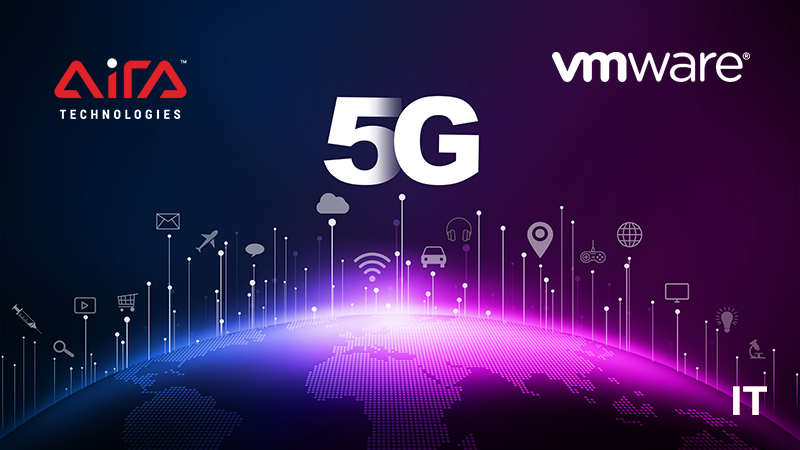Aira Technologies, a pioneer in the application of machine learning (ML) to radically improve wireless telecommunications, announced that together with VMware by Broadcom, they successfully demonstrated Aira’s Energy Management rApp integration, functionalities, and performance with the VMware cRIC as a non-RT RIC framework utilizing the VIAVI TeraVM network emulator in an O-RAN-based end-to-end network.
To demonstrate interoperability, Aira set up an end-to-end configuration for the energy management use case test, using a VIAVI TeraVM network emulator to emulate a multi-layer 5G network. The Aira rApp runs atop the VMware cRIC which is connected to the TeraVM emulator, the source of network KPIs. The Aira rApp receives the required KPIs through the R1 interface from the VMware cRIC DME, and then stores the data in an Amazon S3 storage bucket and DynamoDB on AWS. The rApp applies ML algorithms and determines optimal energy efficient configurations from these KPIs, generates new network configuration management (CM) settings and provides new network CM back to VIAVI TeraVM to minimize the power consumption without impacting the QoS, based on the defined threshold.
“Aira is built on the premise that the application of ML to all layers of the RAN infrastructure stack can deliver breakthrough performance benefits to the operator community. What we have been able to achieve here showcases three very important things – the power of the Open RAN movement to accelerate innovation; the extraordinary potential for ML in cutting-edge wireless applications in 4G and 5G cellular networks; and the ability to inter-operate in a multi-vendor end-to-end test environment,” said Anand Chandrasekher, co-founder and CEO of Aira Technologies. “We look forward to continuing our work with VMware to make cellular networks significantly more energy efficient.”
Also Read: MVNOs on Plintron MVNA / MVNE platform have differentiation opportunities with 5G technology
Multi-layer cellular 5G network deployment typically features underlay coverage bands and overlay capacity bands. There are instances when capacity bands are not utilized, and keeping them on leads to unnecessary energy consumption. For any given cell, however, there is an optimal active band combination that minimizes power consumption while still meeting the throughput demands of the users attached to the radio unit (RU). This is a non-trivial problem to solve, since the throughput demands of the cell vary with time, and new cell configurations cannot be implemented too frequently. This is precisely the type of problem to which Machine Learning (ML) techniques can be applied, to increase the accuracy of the decision-making process.
Aira’s ML-based Dynamic Radio Network Management application solves this problem by using ML models to predict wireless network traffic demand, and choosing the active band combination that jointly optimizes power consumption and user experience. The rApp will receive RAN contextual information (e.g., DRB UL/DL throughput, PRB utilization) via the R1 interface to the non-RT RIC and provide new configuration management (CM) data back to the network emulator through Service Management and Orchestration (SMO).
SOURCE: PRWeb
































